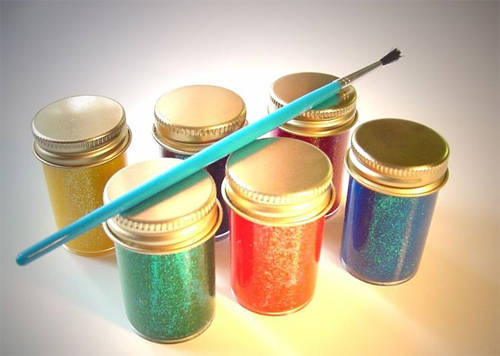Waterborne coatings are expected to dominate the market

Solvent-based paints are produced using organic solvents as dispersion media for film-forming materials and have consistently ranked first in the history of paint market development. However, organic solvents will volatilize in a large amount after the film is formed, causing environmental pollution. Most organic solvents are toxic to humans, animals, organisms and even plants. This is a dangerous aspect of solvent-borne coatings.
In addition, after the solvent coating forms a film, a large amount of organic solvent will volatilize, which results in the waste of resources and energy. Assuming that 1 ton of solvent-based paint is 40% solids at construction viscosity, 600 kg of organic solvent will evaporate. According to a rough calculation, 0.42 tons of standard coal is required to produce 1 ton of organic solvent (such as butyl acetate); 0.14 ton of standard coal is required to distill 1 ton of solvent. The production of 600kg of solvent may consume about 0.252 tons of standard coal. For example, all solvents that are distilled from coal chemical products or petroleum cracking products will consume at least about 84kg of standard coal.
Although solvent-based paints have many drawbacks, they are not useless. Otherwise, they cannot always be ranked first in the coatings industry. After long-term development, solvent-based paints have become highly decorative, durable, protective, versatile and complete. New engineering materials not only play an important role in the development of modern industry and modern defense, but also the development of modern high-tech industries such as information, biochemistry, new materials, aerospace, marine development, renewable energy development, and environmental protection. The development of organic solvents has played a key role in the development of solvent-based coatings.
Under the current environmental protection policy, the advantages of solvent-based coatings are not so obvious. On the contrary, their disadvantages are the most obvious.
Compared to solvent-based coatings, water-based coatings are more environmentally friendly. It is understood that on September 13, the State Council promulgated the "Action Plan for Prevention and Control of Atmospheric Pollution". In this plan, a clear indication was given to the development of the paint industry. The State Council pointed out that the paint industry needs to improve the volatilization of paints, adhesives and other products during development. Limiting standards for organic substances, promoting the use of water-based coatings, and encouraging the production, sale, and use of low-toxicity, low-volatile organic solvents. This is enough to show that at present the state attaches importance to environmental protection and pays attention to waterborne coatings.
Water-based paint is a new kind of environmentally-friendly paint in comparison with traditional paints. The principle of environmental protection is to use water instead of the thinner in traditional paints. Compared with traditional organic solvent coatings, waterborne coatings have the following advantages:
First, it is safer, healthier, and more environmentally friendly. Waterborne wood lacquer is non-flammable, basically odorless, and has low VOC units, which reduces the risk of fire and the incidence of skin diseases.
Second, the paint film has good performance. In addition to all the properties of the traditional paint film, the water-based paint is more resistant to ultraviolet radiation, the color change is less, and the furniture items have a longer life.
Solvent coatings and water-based coatings are currently the two main forces in China's coating market. However, with the increasingly stringent national environmental requirements, the development of solvent-based coatings has been affected. However, the advantages of waterborne coatings in environmental protection are far greater than those of solvent-based coatings. Whether it is in the current or forthcoming environmental protection policies are very popular, therefore, the Chinese paint procurement network Xiaobian believes that in the future coating market. Among them, waterborne coatings will gradually replace the status of solvent-based coatings and become the dominant force in China's paint market.
DUPLEX STAINLESS STEEL
Duplex Stainless Steels Available
Yuhong Group supplies LDX2101, 2205, Ferralium 255, Zeron 100 and LDX2507 in the form of plate, sheet, strip, bar, pipe, tubing, pipe fittings, flanges and weld wire.
Duplex Stainless Steel Overview
Duplex Stainless Steels, also referred to as austenitic-ferritic stainless steels, are a family of grades with about equal proportions of ferrite and austenite. These steels have a duplex microstructure which contributes to their high strength and high resistance to stress corrosion cracking. Due to their high content of chromium, nitrogen and molybdenum, duplex steels offer good resistance to local and uniform corrosion. Duplex stainless steels have good weldability.
Today, modern duplex stainless steels can be divided into three groups:
Lean Duplex such as LDX2101
Standard Duplex such as 2205, the work-horse grade accounting for more than 80% of duplex usage
Super Duplex such as Ferralium 255 and Zeron 100 and LDX2507
Of the duplex grades, duplex 2205 is the most widely used. However, the super duplex steels like Zeron® 100 and LDX2507 are excellent for servicing severe corrosive environments, such as offshore and marine applications. Lean duplex 2101 is available as an economic alternative to 300 series stainless steels.
What are the Characteristics of Duplex Stainless Steels ?
Very good resistance to uniform corrosion
Very good resistance to pitting and crevice corrosion
High resistance to stress corrosion cracking and corrosion fatigue
High mechanical strength
Good sulfide stress corrosion resistance
Good abrasion and erosion resistance
Good fatigue resistance high energy absorption
Low thermal expansion
Good weldability
In what Applications are Duplex Stainless Steels® used ?
Oil and gas equipment
Offshore technology
Seawater desalination plants
Chemical industry, especially when handling chlorides
Flue-gas cleaning
Desalination plants and seawater systems
Pulp and paper industry
Cargo tanks and pipe systems in chemical tankers
Firewalls and blast walls on offshore platforms
Bridges
Storage tanks
Pressure vessels, reactor tanks, and heat exchangers
Rotors, impellers and shafts
Super Duplex Steel Pipe,Super Duplex Stainless Steel Pipe,304 Super Duplex Steel Pipe
YUHONG GROUP CO.,LIMITED , http://www.alloypipeline.com